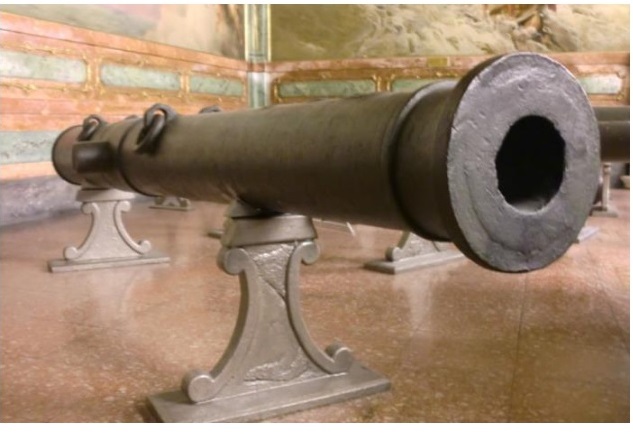Quote:
Originally Posted by Jim McDougall

... This is most interesting! and looking into these areas on cannon/guns, notably out of my range (pun intended) but fascinating to learn about....
|
Jim, i will subscribe to your admiting your "out of range" knowledge in the subject; i know nothing of it too.
Could i however raise my doubts to the attribution of your first picture as being from the culverin type, as i see in it a relatively small breech loading piece.
Allow me to show you illustrations of culverins and half culverins of Portuguese origin in the museum of Angra do Heroismo (Portuguese Azores Islands).
Also some descriptions of the same type in the Lisbon Artillery Museum.
- Half (Bastard)Colubrine.
Description: Fire mouth used in site operations. Threw 6 kg iron balls.
Caliber 12.4 cms. Length 3.62 meters.
Casting date 1548-75.

- Half Colubrine Bastard.
Description: Fire mouth used in site and on-board operations.
Threw 4,5 Kg. iron balls.
Caliber 11,4 cms. Length 3 meters.
XVI century.
Last a report from the fortress of São Sebastião da Caparica, giving count of the local artillery and demanding reinforcements, where we may observe the robustness of culverins by their calibers.
There are six pieces of artillery in this fortress, namely: two 44-pound cannons; a 30 pound stone ball pedreiro; a 14-pound culverin; a 24-inch half-cannon and a two-inch falconet, with which gunners are trained on. We need two more 16 to 18 pound culverins. These piecrs are all mounted on carts. We need a spare cart for each of them.
If i am not wrong, all specs. described in all those examples are somehow related with the ones classified as culverins and half culverins in Olesa Muñido chart (post #10).
.